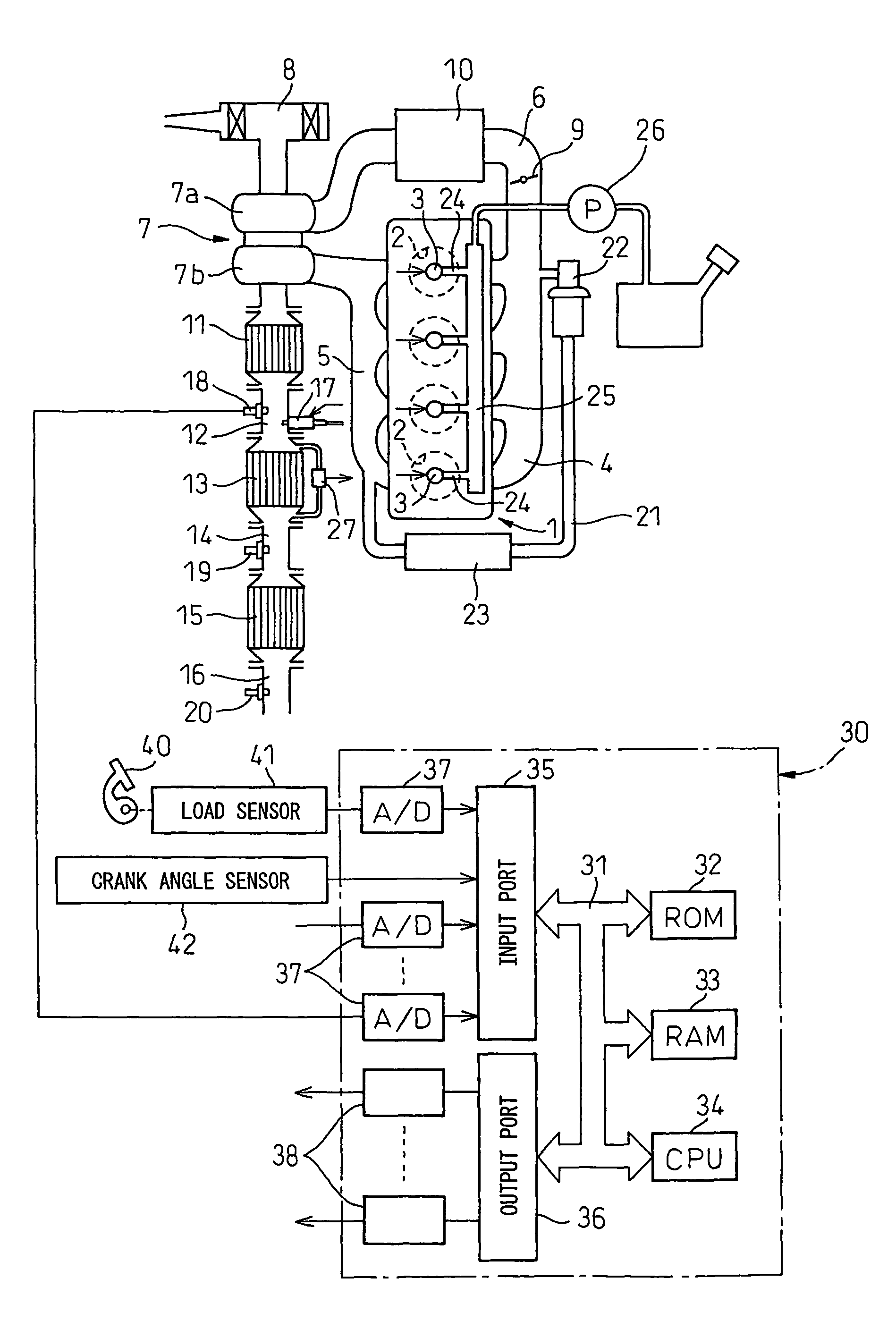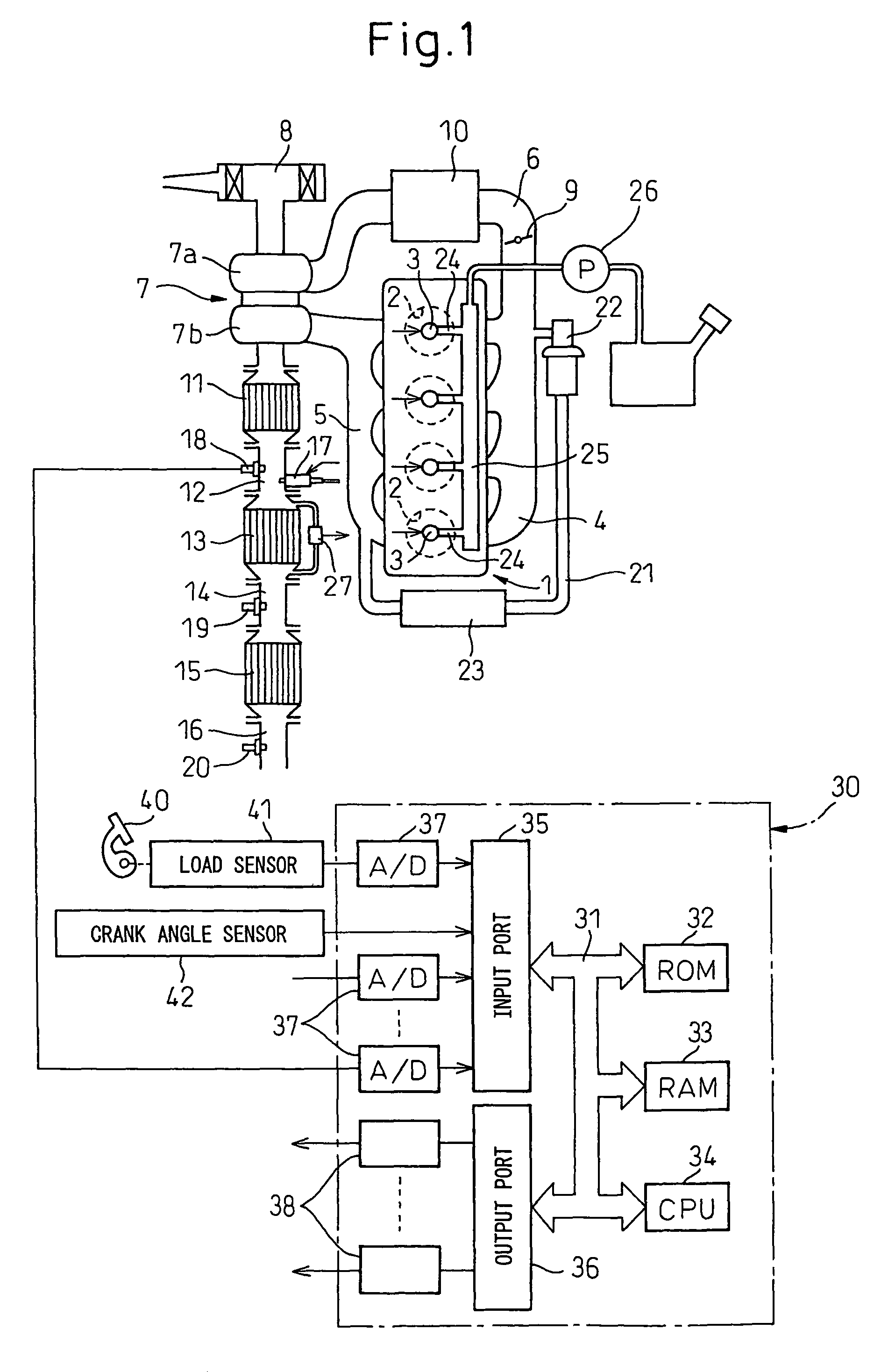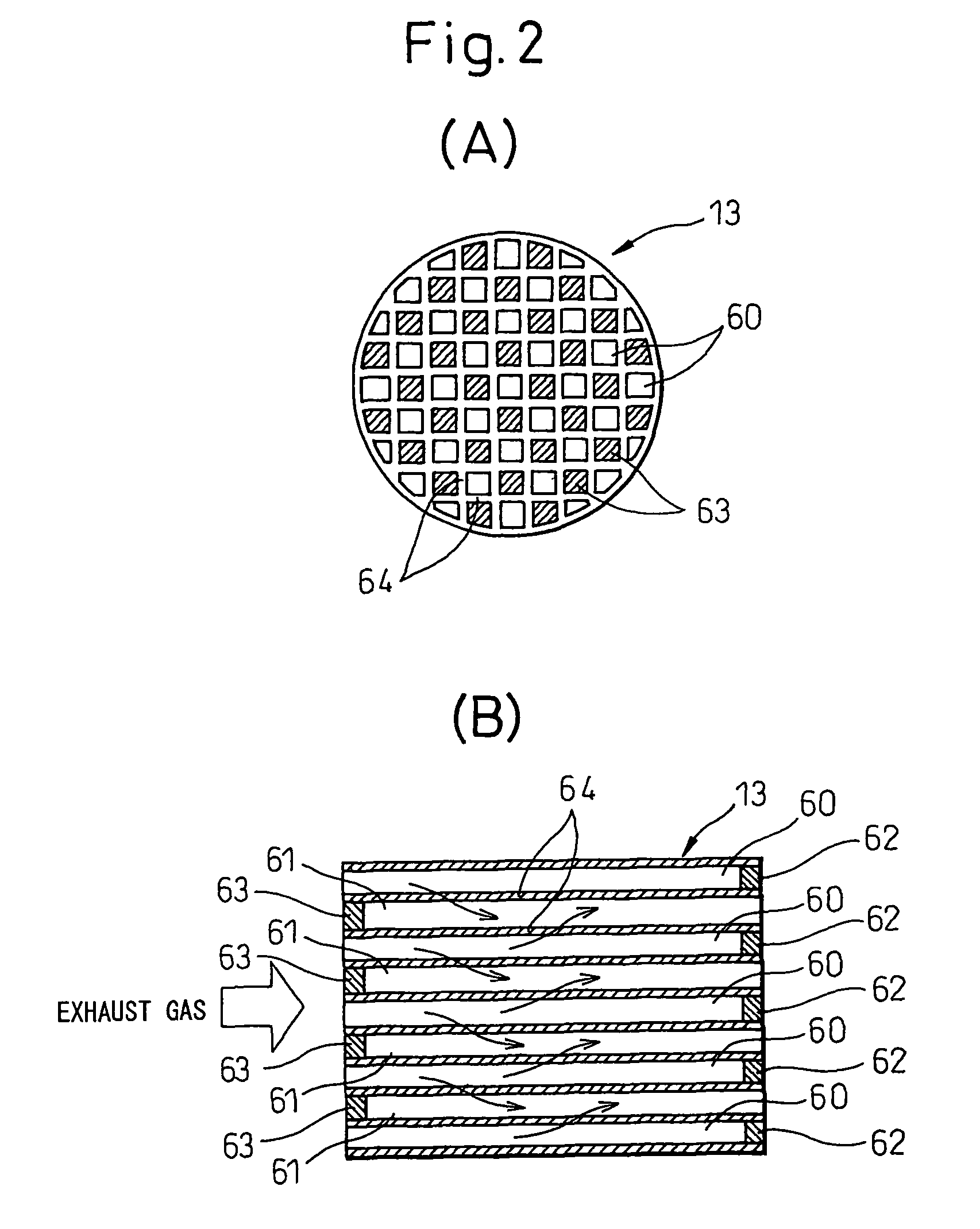Internal combustion engine
a combustion engine and combustion chamber technology, applied in the direction of machines/engines, electrical control, separation processes, etc., can solve the problems of increasing the amount of consumption of post-treatment use fuel, and decreasing the amount of consumption of combustion use fuel, so as to reduce the total amount of fuel used
- Summary
- Abstract
- Description
- Claims
- Application Information
AI Technical Summary
Benefits of technology
Problems solved by technology
Method used
Image
Examples
Embodiment Construction
[0009]FIG. 1 shows an overview of a compression ignition type internal combustion engine.
[0010]Referring to FIG. 1, 1 indicates an engine body, 2 a combustion chamber of a cylinder, 3 an electronic control type fuel injector for injecting fuel into the combustion chamber 2, 4 an intake manifold, and 5 an exhaust manifold. The intake manifold 4 is connected via an intake duct 6 to an outlet of a compressor 7a of an exhaust turbocharger 7, while an inlet of the compressor 7a is connected to an air cleaner 8. The intake duct 6 has a throttle valve 9 driven by a step motor arranged inside it. Further, around the intake duct 6, a cooling system 10 for cooling the intake air flowing through the inside of the intake duct 6 is arranged. In the embodiment shown in FIG. 1, the engine cooling water is led into the cooling system 10 where the engine cooling water cools the intake air.
[0011]On the other hand, the exhaust manifold 5 is connected to an inlet of the exhaust turbine 7b of the exhaus...
PUM
 Login to View More
Login to View More Abstract
Description
Claims
Application Information
 Login to View More
Login to View More - R&D Engineer
- R&D Manager
- IP Professional
- Industry Leading Data Capabilities
- Powerful AI technology
- Patent DNA Extraction
Browse by: Latest US Patents, China's latest patents, Technical Efficacy Thesaurus, Application Domain, Technology Topic, Popular Technical Reports.
© 2024 PatSnap. All rights reserved.Legal|Privacy policy|Modern Slavery Act Transparency Statement|Sitemap|About US| Contact US: help@patsnap.com










